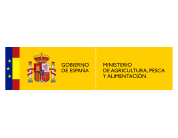The PRADERA project is an initiative developed by FIHAC, thanks to which a network has been designed to monitor the conservation status of the meadows of Zostera noltei (habitat 1140) in the Atlantic Biogeographic Region of the Spanish coast and has managed to quantify the carbon sequestration capacity of this species.
The PRADERA project is an initiative developed by the Foundation Institute of Environmental Hydraulics of Cantabria (FIHAC), thanks to which a network has been designed to monitor the conservation status of the meadows of Zostera noltei (habitat 1140) in the Atlantic Biogeographic Region of the Spanish coast and has managed to quantify the carbon sequestration capacity of this species. The initiative “Monitoring network to characterise and assess the conservation status of Zostera noltei meadows (habitat 1140) in the Atlantic Biogeographic Region: design and implementation (PRADERA)” was one of the beneficiary projects of the2017 call for grants of the Biodiversity Foundation of the Ministry for Ecological Transition.
The project has had a series of protected areas as scenarios:
- Atlantic Islands of Galicia Maritime-Terrestrial National Park.
- Urdaibai Biosphere Reserve.
- Villaviciosa Estuary Nature Reserve.
- The Natural Parks of Oyambre, Dunas de Liencres, Marismas de Santoña, Victoria and Joyel and the Dune Complex of Corrubedo.
The actions carried out by FIHAC have made it possible to achieve the first objective of the project, which consists of designing and implementing the monitoring of the conservation status of the meadows of Zostera noltei (an aquatic plant that lives in saline waters), with the preparation of an updated cartography of the distribution area of the species in the estuaries of the Atlantic biogeographical region and in the Bay of Cadiz. corresponding to the year 2018. Those estuaries with a favorable distribution and a positive trend have also been identified, with the aim of establishing a standardized methodology for monitoring their conservation status. As a result of this activity, the project incorporates a table with the list of estuaries that make up the network for monitoring the conservation status of Zostera noltei designed for the Cantabrian Sea, all of them having some form of protection and being integrated into the Natura 2000 Network.
Within the framework of the initiative , a historical analysis of the distribution area of the grasslands of the species in the Maritime-Terrestrial National Park of the Atlantic Islands of Galicia has been carried out, which has made it possible to obtain a retrospective mapping (1987-2015) of these meadows in the Cortegada archipelago (located in the National Park) and the compilation of historical field cartographies with the area occupied by the species in 2016 in Cortegada and Sálvora.
With regard to the capacity of the Cantabrian meadows of Zostera noltei to sequester carbon in the short term, which was another of the objectives of the project, the results obtained demonstrate this capacity, taking into account the differences between the components analysed and the meadows. The predictive model of biological carbon sequestration and retrospective analysis for the years 1984-2015 and the spatial distribution of organic carbon sequestration (Corg) are also presented.
On the other hand, the initiative has made it possible to identify priority areas for the conservation of the species. A total of 7 priority areas have been identified made up of Zostera noltei meadows with a favourable conservation status with a positive trend. The 7 areas of the Cantabrian Estuary Network that are priorities for conservation are Oriñón, Santoña, Joyel, Bahía de Santander, Mogro, Oyambre and San Vicente de la Barquera.
Likewise, 16 areas for restoration have been identified formed by meadows of this species with an unfavorable conservation status with a negative trend. The 16 estuaries that are candidates to be restored are those of Oka, Ribadesella, Villaviciosa, Eo, Foz, Viveiro, O Barqueiro, Ortigueira, Cedeira, Ferrol, Ares, Betanzos, A Coruña, Corme e Laxe, Camariñas and Muros e Noia.
The project also contemplated actions of dissemination, dissemination and public awareness. In addition to the preparation of an informative leaflet, workshops have been held in schools and the progress of the project has been disseminated on social networks. A website (http://pradera.ihcantabria.es/) has also been created in which all the information related to the initiative has been published, as well as downloadable content consisting of technical reports and teaching material, among others.












 back to search
back to search